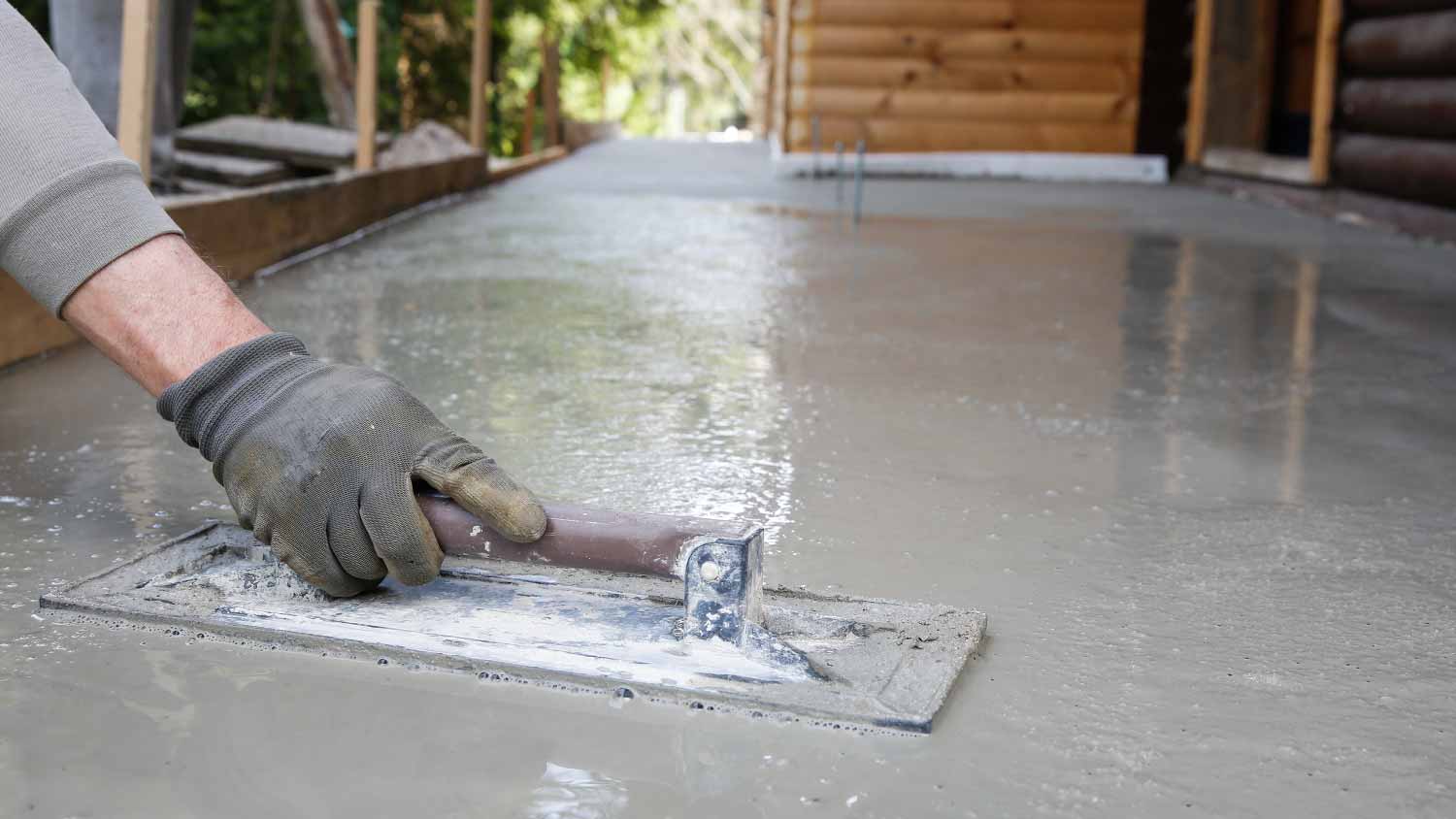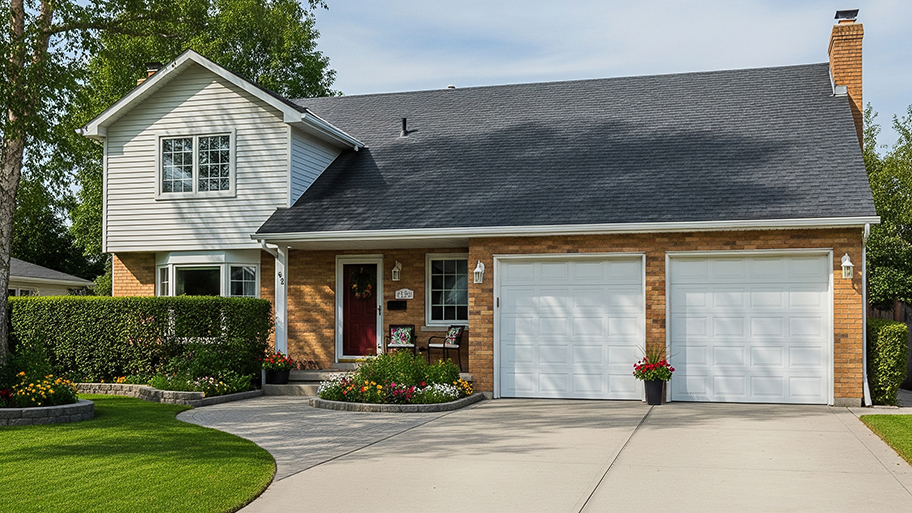
Between the endless customizations and decades of strength, the cost of a concrete driveway may be worth the investment. Let's break down your bottom line.
How to decide if you’re con-crete or pro-crete for your home’s floors


Concrete floors offer a durable, low-maintenance alternative to traditional flooring materials.
Modern concrete floors come in a wide range of finishes and colors.
Concrete floors may not be ideal for homes with small children or in very cold areas.
You may associate concrete floors with garages and basements, but this long-lasting material is becoming a popular choice for floors throughout the home. With finish options to fit any design style, concrete floors are an affordable and easy-to-maintain choice for almost any room. Explore the pros and cons of concrete flooring so you can decide if it’s the right choice for your home.
Concrete floors use this durable construction material to create functional flooring with a contemporary look. Concrete floors can be installed directly on top of a slab or installed over floor joists and subflooring with the help of a local concrete flooring contractor. If you’re picturing dull, gray, industrial-looking floors, you may be surprised to learn that concrete floors come in a variety of finishes and colors to suit any home.
| Pros of Concrete Floors | Cons of Concrete Floors |
|---|---|
| Durable | Prone to cracking |
| Low-maintenance | Hard surface |
| Various colors and finishes | Cold |
Concrete floors can work in your home beyond the garage or basement. While concrete may not be what first comes to mind when considering flooring options, this versatile material has much to offer.
Concrete is the most common foundation material for good reason—its durable, difficult-to-damage construction means it can stand up to heavy use without frequent repairs or replacement like many kinds of traditional flooring, such as hardwood, laminate, or carpeting. It won’t scratch from pets’ nails or furniture rearranging, and dropping something on it won’t leave dents or dings.
Properly sealed concrete is extremely low-maintenance—just sweep and use a damp mop to keep it clean. Concrete floors resist stains and scratches and don’t trap allergens and dirt. Depending on the traffic level and your floor installer's recommendation, you’ll want to reseal or re-wax your floors every few years.
With various types of concrete floor finishes, this flooring can seamlessly mesh with your home’s design style. Dyes, concrete stains, paints, and washes can change the concrete color to add warmth, create subtle multicolored designs, and match your home’s color scheme. Finishes ranging from glossy, polished concrete floors to stamped designs that mimic tile or add intricate detailing allow you to customize your concrete floors to achieve exactly the look you want.
While concrete floors have numerous benefits, there are a few things you should consider before installing them in your home.
All homes settle, and concrete is susceptible to developing cracks. Cracks in your basement floor or any other concrete floor in your home aren’t necessarily cause for concern—most minor cracks can be filled and sealed and don’t indicate any structural problems. In some cases, cracks may make your concrete floor more prone to moisture issues. It’s important to test your concrete floor’s moisture level to ensure there’s nothing to worry about.
There’s no getting around it—concrete is a hard, unforgiving surface. Households with small children or elderly family members may want to avoid concrete floors since a fall onto concrete can be more serious than one on flooring with more give. Clumsy homeowners may also want to consider concrete’s tough exterior since dropped items are less likely to survive unharmed.
Concrete offers very little insulation, so when temperatures drop, concrete floors can hold in the cold. Area rugs can provide some heat retention, or homeowners can install radiant floor heating to take the chill out on cold winter days.
There’s no shortage of flooring options available when you’re trying to decide what’s best for your home. Hard flooring alternatives to concrete include tile, stone, hardwood, and laminate, all available in a nearly endless array of colors, styles, and finishes. For homeowners who prefer a softer feel underfoot, carpet, cork, and rubber flooring provide a little more bounce.

If you’re looking for a durable, easy-to-clean flooring material that stands up to a lot of abuse, concrete might be the right choice. Consult with a concrete flooring pro to discover what options are possible in your home and fit your lifestyle and design vision.
If your household includes young children or the elderly, or you prefer a warm, cozy feel for your flooring, you may want to explore other options that suit the specifics of your home and design style.
From average costs to expert advice, get all the answers you need to get your job done.

Between the endless customizations and decades of strength, the cost of a concrete driveway may be worth the investment. Let's break down your bottom line.
Need to breathe new life into your exterior stoop? Use this guide on concrete step repair cost to see the price of a professional repair.

Concrete driveways stand up to a lot of pressure over the years. How much do concrete driveway repairs cost when it's time to give it a little TLC?

Do you really have to dig up your yard before laying the new walkway? Let's explore whether you can pour concrete over grass and how to simplify the process.

Take a look at how to give old concrete a facelift or put new concrete on the path to a gleaming, glossy finish in this guide on how to grind concrete.

Not sure what type of concrete is best for your project? Learn about the differences between fiber concrete versus rebar-reinforced to get started.